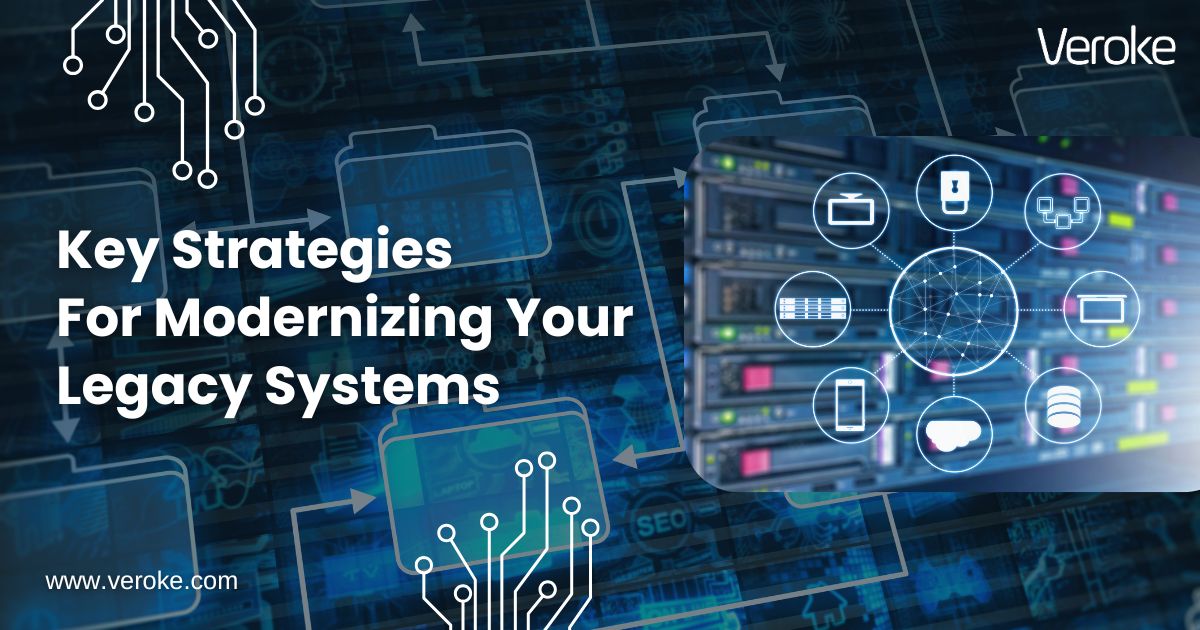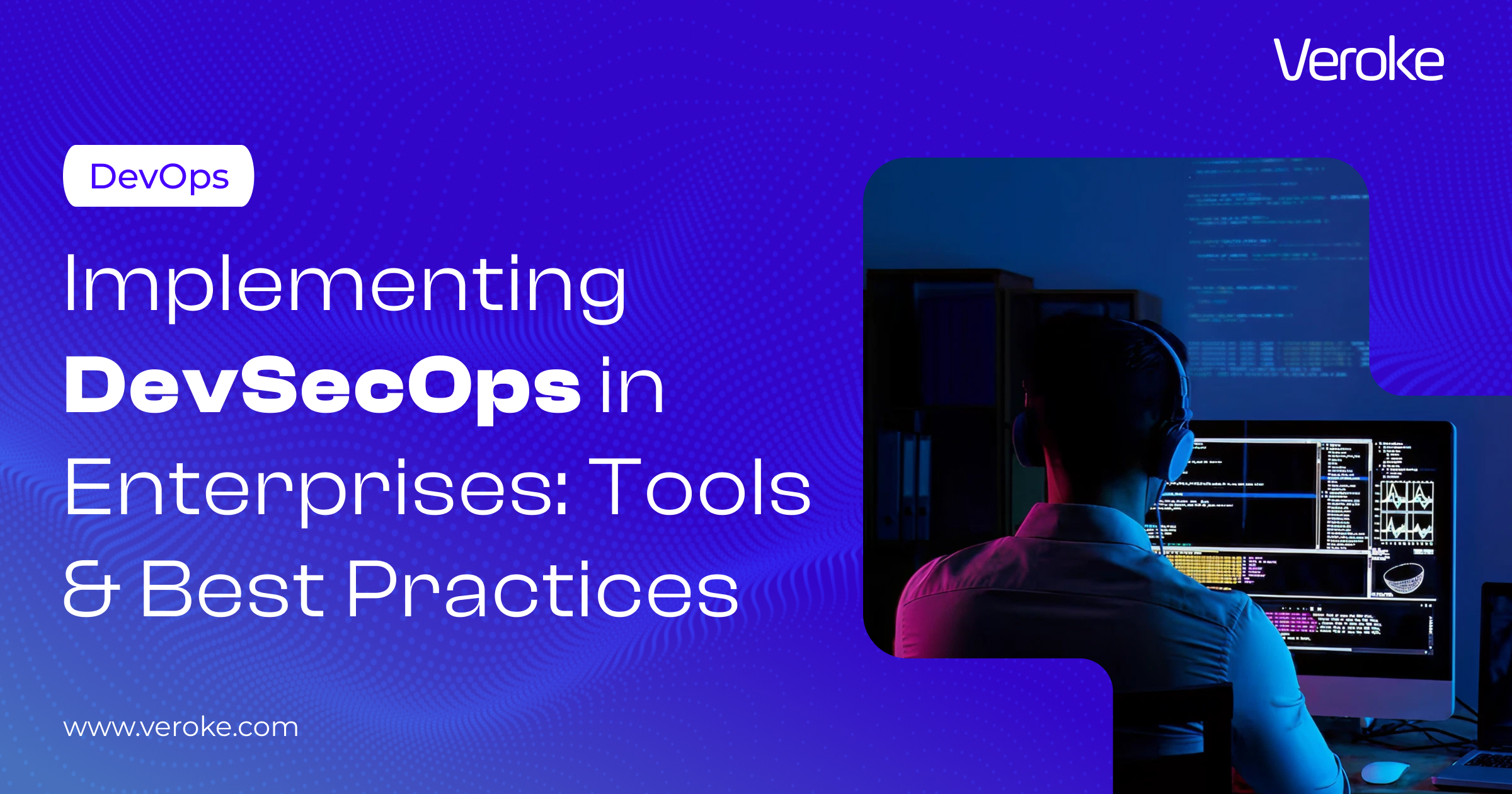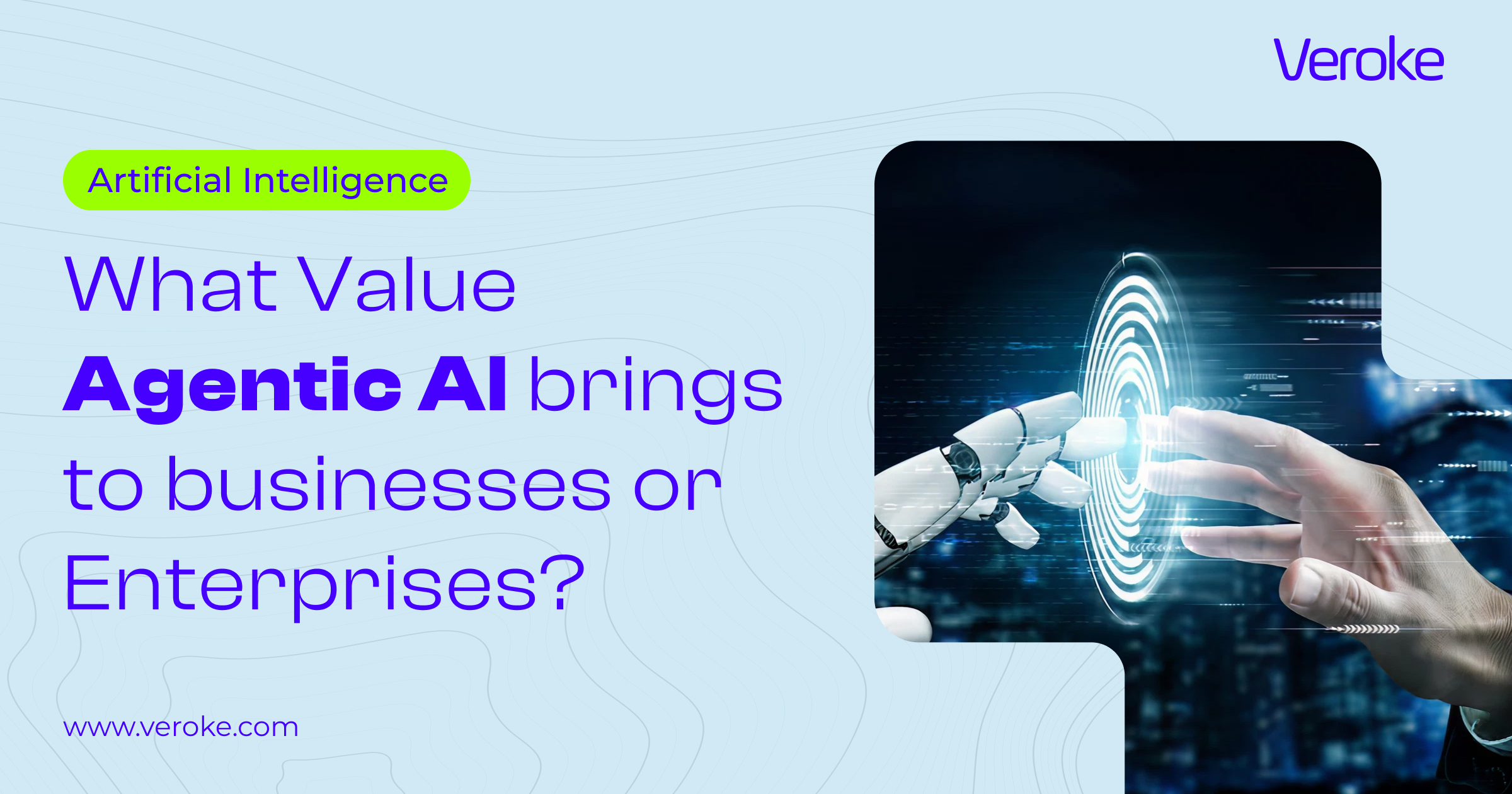Overview
Inside Saudi’s Tech Transformation
Get exclusive weekly insights into how the Kingdom is powering Vision 2030.
TL;DR
- Legacy systems are holding businesses back; nearly 60% of enterprise apps are outdated, limiting performance, innovation, and scalability.
- These systems bring security risks, maintenance challenges, poor integration, and high costs, making modernization essential for growth.
- Modernizing legacy systems boosts efficiency, enhances security, and ensures compatibility with emerging technologies like cloud and AI.
- Common modernization approaches include rehosting, replatforming, refactoring, rearchitecting, rebuilding, or replacing; depending on business goals and system complexity.
- Veroke helps organizations modernize seamlessly with tailored strategies that improve performance, reduce risk, and future-proof your digital infrastructure.
Are legacy systems holding your business back? If you’re nodding along, you’re not alone.
Let’s face it, legacy systems are everywhere. Even when businesses try to move away from legacy systems, many still rely on them to keep their operations running. In fact, a Forbes report says nearly 60% of enterprise applications fall into the “legacy” category.
Sure, those systems helped you get where you are today. But let’s be honest they’re not built for where you’re headed. Eventually, they’ll start slowing you down, becoming obstacles to growth and innovation.
So, what now?
The idea of replacing a system your team has relied on for years or even decades might feel overwhelming. You’ve probably got a million questions in your mind. Will modernization be worth it? How do you pick the right partner to make it happen?
But here’s the truth: in today’s era of rapid digital transformation, legacy systems aren’t just outdated but they’re roadblocks to progress. Modernizing isn’t just a nice-to-have; it’s the key to staying ahead.
Let’s dive into why and how you can make it happen.
Understanding Legacy System Modernization
The yin and yang of legacy systems is that they are the backbone of many businesses.
However, they often fall short in functionality, security, speed, and data storage compared to modern tools.
Simply put, they’re the software, technologies, or processes your organization has relied on for years. These are systems that worked well once but are now outdated or losing their edge.
Modernizing these systems can feel like a daunting, expensive project. They’re often tricky and complex to update, and it’s easy to wonder if it’s even worth the effort.
The good news is that you can overcome legacy system modernization challenges without draining your budget or resources. With the right strategies, you can save your development team’s time, reduce costs, and deliver better value to your customers.
Before we get into the modernization strategies, let’s take a moment to understand the risks of relying on legacy systems. Ignoring these risks could cost your business more than you realize.
Risks Associated with Legacy Systems
You are likely to face challenges when your system begins to age and transition into a legacy system. Here are some of the key risks and pitfalls organizations face when relying on outdated technology:
1. Maintenance Challenges: Due to the lack of support and expertise, maintaining legacy systems can become increasingly challenging as technology advances.
2. Security Vulnerabilities: Legacy systems pose significant risks to organizations since they are more vulnerable to security risks and may not adhere to current regulatory standards.
3. Code Bloat: Over time, legacy systems accumulate excessive code, making them harder to manage.
4. Limited Third-Party Integration: Legacy systems functionality is limited as they often fail to integrate with newer third-party applications.
5. Inefficient Performance: Slow response times and outdated processes can affect productivity and efficiency, frustrating both employees and customers.
6. Poor Adaptability: Legacy systems may struggle to integrate new tasks and workflows, impeding the organization’s growth and innovation.
Recognizing these risks is the first step toward making informed decisions about modernizing your systems. By addressing these challenges proactively, you can pave the way for a more agile and efficient future.
Why Modernizing Legacy Systems is Essential?
Legacy systems play a critical role in an organization’s operations, but they often fall short when it comes to meeting the demands of today’s business environment.
According to Statista, in 2023, over half of the surveyed companies cited increasing security and improving efficiency as the primary drivers for modernizing their legacy applications and data.
Modernizing these systems allows businesses to take advantage of advanced technology, helping their development teams, strengthen security measures, and provide a better user experience.
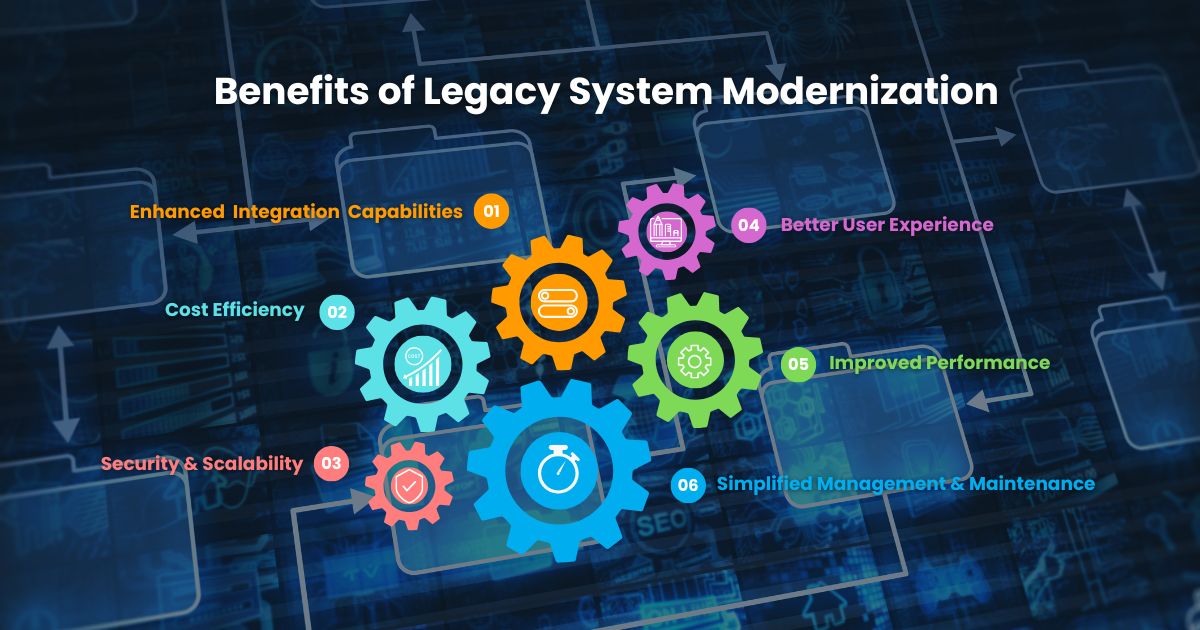
Modernization Process: How to make it happen?
So, how do you modernize your legacy systems?
Legacy system modernization is all about updating and optimizing your systems to meet the current needs of your business and keep up with new technologies.
There are several ways to modernize, including rehosting, re-platforming, recoding, or even replacing the entire system.
The main goals are to improve security, boost performance, cut operating costs, and ensure that everything works smoothly with newer technologies and systems.
The right strategy depends on the specific problem you’re trying to solve. Here’s a proven 3-step process to guide you through application modernization.
This will provide you with clear guidance on how you should approach legacy modernization.
Step 1: Evaluating Legacy Systems
The journey to modernize your legacy systems starts with a thorough evaluation. This step is all about identifying the problems and challenges caused by the current technology, architecture, or functionality of your existing applications.
There are six key factors driving the need for modernization. Three of these come from the business side, and the other three are from the IT perspective.
From the Business Perspective:
If your legacy system isn’t meeting the demands of your business, it’s time for an upgrade. Outdated systems can become a liability, whether in terms of cost or risk. If your system isn’t delivering enough business value or is holding you back, modernization is necessary.
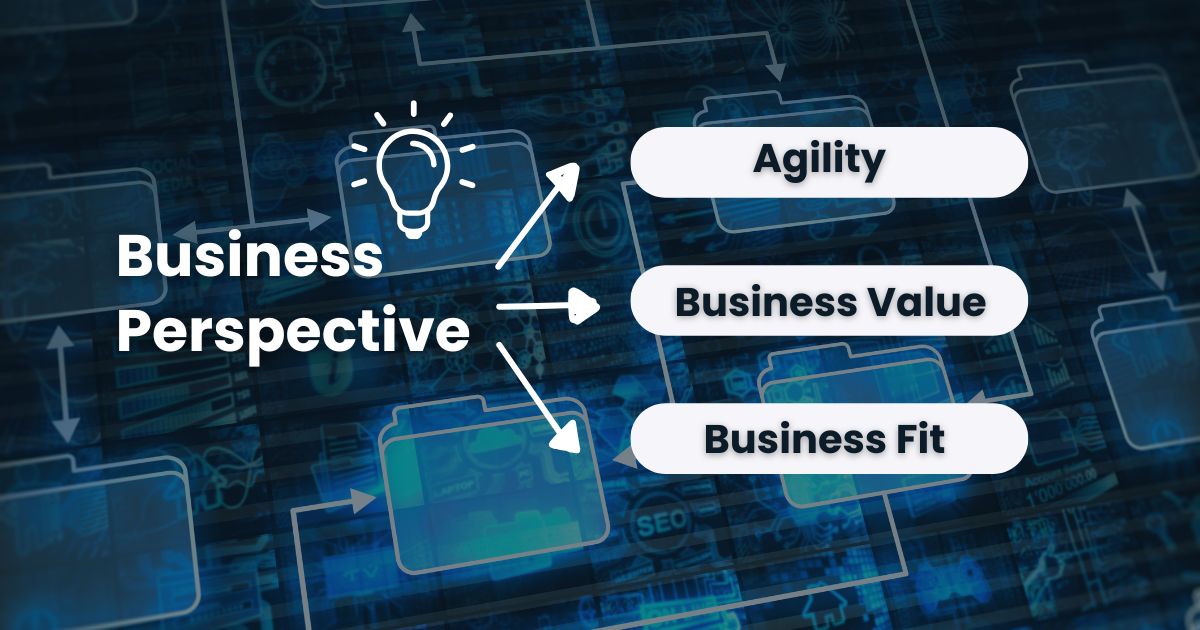
From the IT Perspective:
On the IT side, there are a few other important drivers. If the cost of maintaining the system is too high, the technology is overly complex, or security and scalability are at risk, modernization becomes essential.
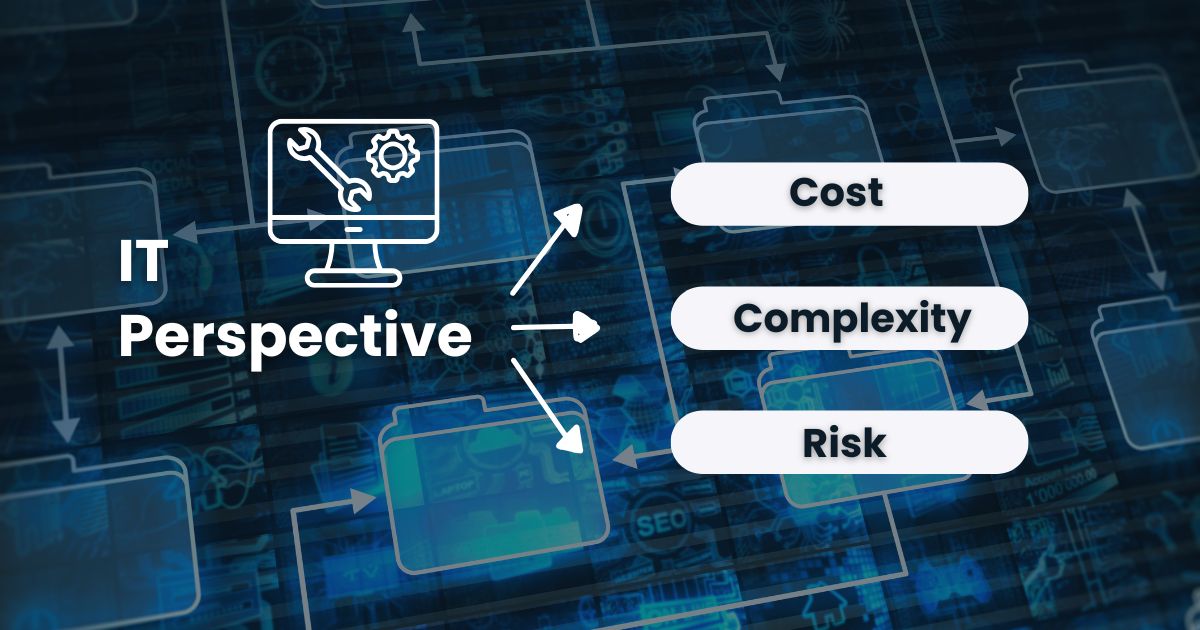
The best opportunities for modernization often have multiple drivers from both business and IT perspectives. This combined approach ensures that the updates will address key concerns from all sides and truly add value to your business.
Step 2: Evaluate Modernization Options
Once you’ve identified the problem, the next step is to explore your options for modernization.
Modernization approaches can be ranked based on factors like ease of implementation, cost, and overall impact. These include methods such as rehosting, re-platforming, refactoring, rearchitecting, rebuilding, or even replacing the system entirely.
Each approach comes with its own level of complexity and benefits, so it’s essential to choose one that aligns with your business goals and resources.
➤ Retain or Encapsulate
This approach involves extending your legacy system’s features by wrapping its data and functions within a new architecture. You can reuse components of the legacy system via APIs.
➤ Rehost
This is the quickest option, where you move your application to new infrastructure with little or no modification to the code. It’s a great way to move from a local setup to the cloud.
➤ Replatform
This involves migrating your legacy system to a new runtime platform. You make minimal changes to the code but retain the overall structure, features and functions.
➤ Refactor
This step focuses on restructuring and optimizing your existing code. It’s all about improving what’s there and getting rid of the parts that lead to legacy problems.
➤ Re Architect
Here, you significantly alter the code to shift it to a new architecture that offers better capabilities.
➤ Rebuild
Sometimes, starting from scratch is the best option. Rebuilding involves redesigning or completely rewriting your application while keeping the original goals and requirements in mind.
➤ Replace
If none of the above options make sense, it might be time to replace the legacy system entirely. Here you eliminate the legacy system and build a new one that better fits your current and future requirements and needs.
Step 3: Choosing the Right Modernization Approach
Now that you know your options, it’s time to choose the approach that will bring the most value to your organization. The goal is to focus on the solutions that will have the biggest impact on your technology, architecture, cost, functionality, and security.
Ultimately, the decision often comes down to three main approaches: rearchitecting, rebuilding, or replacing. Each approach has its own set of advantages and challenges, so it’s essential to consider how each aligns with your business goals and technical needs.
The key is to carefully evaluate each option and weigh its potential impact. By doing this you will identify the approach that delivers the results you need.
Final Verdict: Modernization is the Future
Modernization isn’t just a trend but it’s quickly becoming a necessity. To stay competitive, assessing your current systems and implementing a modernization strategy is crucial.
Businesses are embracing digital transformation by partnering with experts to upgrade their legacy systems. Businesses that delay modernization risk falling behind, facing declining productivity, and losing their competitive edge. The future belongs to businesses ready to adapt and innovate.
Are you ready to modernize your legacy systems and future-proof your business? Book a Free Consultation with our experts at Veroke today, and let us help you transform your ideas into a digital reality.
FAQs
1. What is a legacy system?
A legacy system refers to software, hardware, or processes that an organization has used for a long time and that are often outdated or no longer efficient. These systems struggle to meet modern business demands due to limitations in scalability, integration, security, or performance.
2. What are the 7 R's of modernization?
The 7Rs often used in the context of legacy system modernization are: retain, rehost, re-platform, refactor, rearchitect, rebuild, and replace. Each ‘R’ represents a strategy for legacy system modernization.
3. What is a recommended strategy to address the issue of legacy systems?
When a legacy system no longer works for various reasons, the best option is to remove and replace the old application component.
Want to know more about our service.
Inside Saudi’s Tech Transformation
Get exclusive weekly insights into how the Kingdom is powering Vision 2030.
Transform your Ideas into a Digital Reality
Get scalable, customized solutions for your business.

